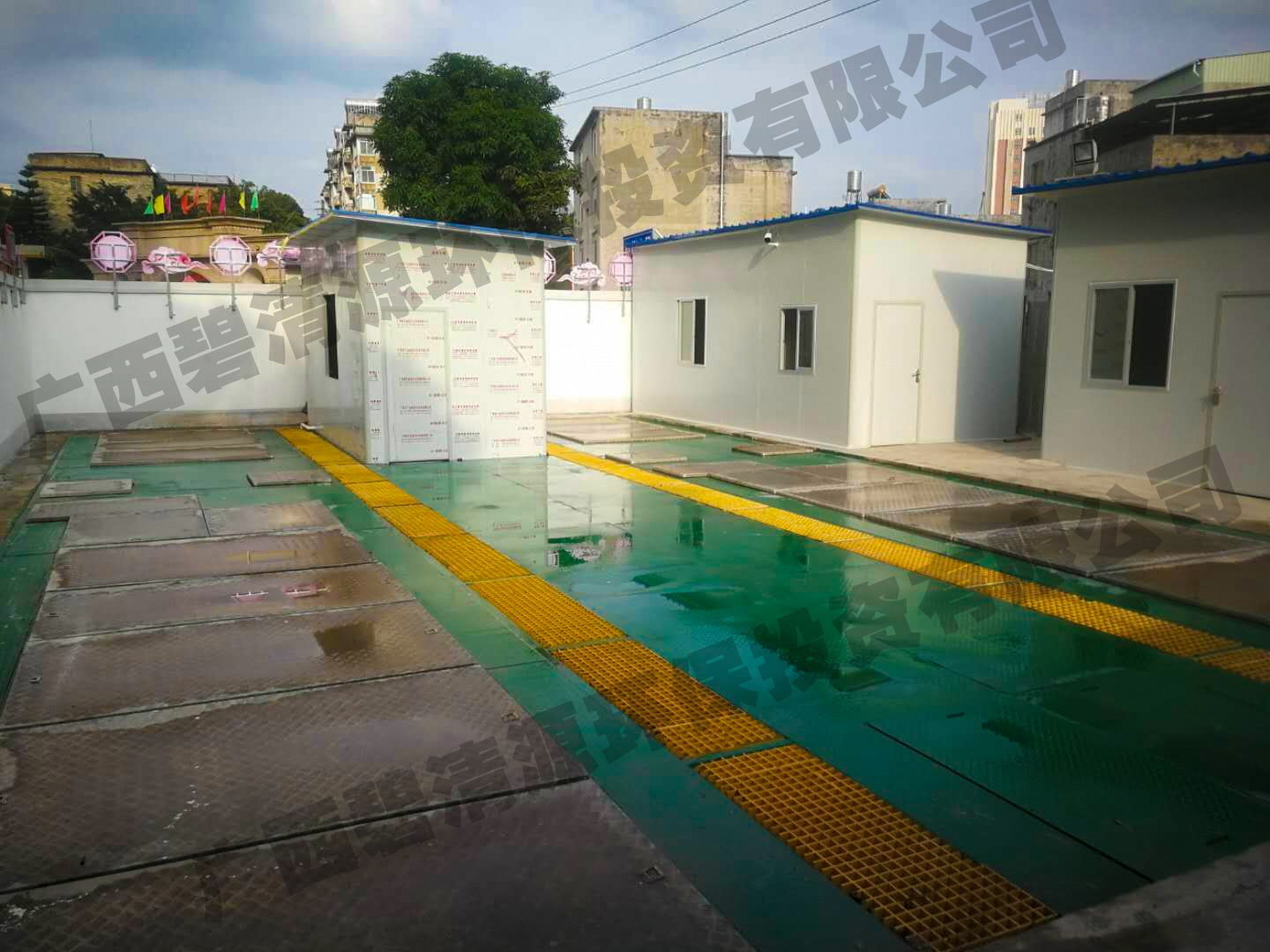
Medical sewage treatment station of a hospital in Guangxi
Project Overview
Guangxi Biqingyuan Environmental Protection Investment Co., Ltd. is a hospital in Guangxi after the transformation and expansion of the medical wastewater treatment system, the treatment scale is 1600m³/d, the treatment process is: grid regulating pool + integrated biochemical equipment + integrated MBR equipment, the effluent meets the requirements of Table 2 in the "Water Sewage Discharge Standards for Medical Institutions" (GB18466-2005), at the same time, due to the advanced technology, it can meet the requirements of Table 1 through operation and control during the epidemic prevention and control period, and there is no need to upgrade the standard again.
Inlet and outlet water indicators
(1) Influent water quality parameters
According to the "Technical Code for Hospital Sewage Treatment Engineering" (HJ2029-2013) combined with the environmental characteristics of the project, the main indicators are considered according to high requirements to cope with the complex diversity of actual water quality, and the design inlet water quality of medical wastewater is shown in Table 1-1.
Table 1-1 Designed inlet water quality of medical wastewater
index | CODCr (mg/L) | BOD5 (mg/L) | SS (mg/L) | NH3-N (mg/L) | 粪大肠杆菌 (MPN/L) |
Dye concentration | 250 | 100 | 60 | 50 | 5000 |
(2) Effluent discharge standards
The bacteria and viruses in the medical sewage shall be disinfected and killed, and the effluent quality of the sewage station shall meet the requirements of the discharge standards for bacteria in Table 2 of the Water Sewage Discharge Standards for Medical Institutions (GB18466-2005). See Table 1-2 for details.
Table 1-2 Pollutant emission limits pH: dimensionless
Unit | items | 标准值 |
1 | Number of coliform bacteria/(MPN/L) | 500 |
2 | Intestinal pathogens | 不得检出 |
3 | enterovirus | 不得检出 |
4 | pH | 6~9 |
5 | COD/(mg/L) | 60 |
6 | BOD/(mg/L) | 20 |
7 | SS/(mg/L) | 20 |
8 | Ammonia nitrogen/(mg/L) | 15 |
9 | Animal and vegetable oils/(mg/L) | 5 |
10 | Petroleum/(mg/L) | 5 |
11 | Anionic surfactants/(mg/L) | 5 |
12 | Chromaticity/(dilution) | 30 |
13 | Total residual chlorine | 3~10 |
Process
The sewage discharged from the hospital is converging into the grid regulating tank (using the original system), which is first intercepted by the grid and large particulate matter, and then enters the regulating tank to regulate the water quality and quantity. It is then lifted to the integrated biochemical treatment equipment by the lift pump. The equipment is divided into anaerobic zone and aerobic zone, in the anaerobic zone efficient activated sludge adsorption of dissolved organic matter in the raw water, and play a good hydrolyzed role in the refractory organic matter, aerobic zone uses a large number of microorganisms in the activated sludge in the biological pool and nitrifying bacteria, phosphorus bacteria, degradation or adsorption of organic pollutants containing carbon, ammonia nitrogen and phosphorus in the water, in order to achieve the purpose of purifying water quality. Then enter the integrated ceramic membrane medical wastewater purification equipment, and the ceramic membrane filtration system uses the ceramic membrane to filter the sludge-containing sewage in the biochemical reaction tank to achieve slurry water separation. Then it flows into the integrated disinfection equipment, and sodium hypochlorite is added to the pool to disinfect and sterilize the sewage, and the disinfected tail water is lifted to the metering channel by the pump and discharged to the municipal sewage pipeline.
Remark:
1. Screening slag is disposed of as hazardous waste;
2. The septic tank and the fecal residue and sludge of each treatment tank are regularly cleaned by a professional company and treated as hazardous waste.

